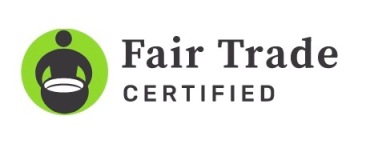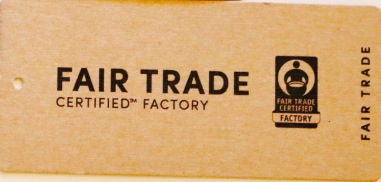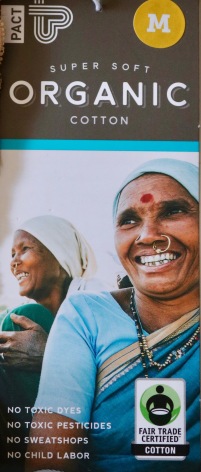Fair Trade Certified is a popular and widely-known certification. So maybe you know it’s “good”, and you try to buy Fair Trade products when possible. But do you know what purchasing Fair Trade means, and the impact it has on the lives of workers? Let’s explore what the standards of Fair Trade Certified are, and the main impacts that they have on people, and the planet.
The headquarters may be based in Oakland, CA, but Fair Trade has a global reach – and impact. At it’s core, the Fair Trade Certification puts forth a set of standards to guide business models to focus on sustainability and ethics. Fair Trade Certified products are required to meet “rigorous social, environmental, and economic standards”.

Once you actually take a look at the standards for Fair Trade Certification, you can see how all of them are incredibly reasonable. In fact, it’s what I would expect for all products I purchase, in terms of how people and the Earth are treated in the process. Unfortunately, this is not the case for the majority of factories and trade practices which is why these standards were put in place.
Fair Trade Premium
One of the most unique things about the Fair Trade Certification is that buyers/importers/brands pay a Fair Trade Premium (FTP) to workers. The Premium is a percentage of the product scaled based on the fairness of the workers wages. If workers wages are closer to minimum wage, the FTP will be 10%; if wages are closer to the living wage than the minimum wage, the FTP will be 5%; if wages are of a living wage, the FTP will be 1%. Workers democratically vote whether to take the FTP as a cash bonus, decide to use it for a collective social investment, or for a combination of the two. The Premium is divided up equally among all factory workers who were employed at the time the Fair Trade product was produced.
Since Fair Trade Certification isn’t boxed into any particular industry sector, they have tailored standards for each industry. Included below is a synopsis on the Factory Standard and Trade Standard for Apparel & Home Goods.
(Note: There are also standards for Agricultural Production, Capture Fisheries, and Trade Standard for Agriculture & Seafood.)

Apparel & Home Goods Factory Standard
The factory standard for apparel and home goods is focused on the cut-make-trim portion of the process. Compliance criteria must be met by the factories in order to attain (and maintain) the Fair Trade Certification, and they are reviewed as part of factory auditing procedures. This standard was first put in place in 2010. The certification is valid for a period of 18 months, after which factories are audited before the certification is renewed.
Workers’ Rights
- A Fair Trade Officer is appointed at the factory
- The Fair Trade Committee is comprised of elected workers, independent of management influence
- Working conditions conform to the Social Accountability Requirements of the Social Accountability International (SAI) SA8000 Standard
- No verbal or physical abuse
- Regular work week cannot exceed 48 hours
- A living wage
- Child labor is prohibited
- No forced labor or human trafficking
- Access to clean water and bathroom facilities
- Healthy and safe work environment
- The right to form unions
- No discrimination
- Two weeks of paid time off (PTO) per year
- Company maintains accurate records of employment practices for each worker for 3 years
- The facility discloses information about subcontractors to Fair Trade, including material suppliers and workers.
- Subcontractors standards are in accordance to ILO core labor standards and legal minimum wages and benefits.
Women’s Protections
- Equal remuneration is provided for female workers
- No forced pregnancy tests
- 8 weeks maternity leave with full pay; breastfeeding breaks upon return to work
- No wage deductions, dismissals, or demotions are prohibited due to maternity leave
Environmental Protections
- Develop and implement a plan to reduce pollution, waste, and natural resource consumption (energy and water)
- Adhere to all local environmental laws
- Eliminate all toxic chemicals and hazardous substances listed by Fair Trade

The Athleta top and tights shown above were made in a Fair Trade Certified factory, meaning that they complied with the standards discussed above. You can visit my blog post on these Athleta garments here.

Trade Standard for Apparel & Home Goods
The trade standard for apparel and home goods is focused on the manufacturing facilities, consumers, and buyers to add value to the supply chain and benefit workers. There are three different “options” for the trade standard certification:
- Fair Trade Factory Certification
- Fair Trade Certified Materials
- Note: this is currently limited only to fair trade cotton
- Fair Trade Certified Factory and Material
Highlights of the trade standard include:
- Importers/brands must show a commitment to Fair Trade Production
- Contracts must include language regarding Fair Trade USA
- Fair purchasing practices between the buyer and supplier that allow the factory to meet the standards (i.e., avoid last minute product changes)
- Only those importers/brands who meet the standards may use the Fair Trade Certification
- Producers of raw materials (i.e., cotton) may be certified under Fair Trade’s agricultural standards

The Pact Organic maxi dress above is made with Fair Trade Certified cotton, meaning that it compiled with the standards discussed above. You can visit my blog post on the Pact dress here.
At the end of the day, the standards discussed above drive home the core values of Fair Trade, which are to provide income sustainability, empower workers, promote individual and community well-being, and environmental stewardship. You can make a difference in lives every day by purchasing Fair Trade. Sign the Fair Trade Difference pledge here to commit to choosing Fair Trade!
For more information, view the links below:
